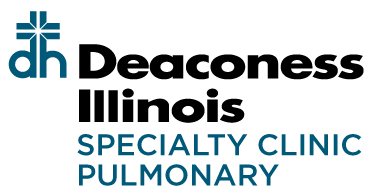Pulmonary and Respiratory Conditions Treated
Acute Respiratory Distress Syndrome (ARDS)
A condition in which fluid builds up in the air sacs, causing difficulty breathing.
Alpha-1 Antitrypsin Deficiency
A genetic condition that may result in serious lung disease in adults. It often goes undetected for years. It can be treated but cannot be cured without a liver transplant.
Asthma
A condition in which airways narrow and swell and produce excess mucus, which can make breathing difficult. It is often associated with coughing and wheezing.
Bronchiectasis
A long-term problem when airways (bronchi) are thickened from infection and inflammation. This condition makes it hard to clear mucus and produces a chronic cough.
Bronchitis
Inflammation (swelling) of the lining of the bronchial tubes, often caused by a viral infection.
Chronic Obstructive Pulmonary Disease (COPD)
A group of lung diseases including chronic bronchitis and emphysema, that block air passages and make breathing difficult.
Cough
Coughing can be a symptom of lung problems. If your cough is severe or it is not improving, it should be evaluated.
Cystic Fibrosis (CF)
A genetic disease that causes thickened mucus to form in the lungs. The mucus blocks the airway, causing lung damage and difficulty breathing.
Emphysema
A lung disease that blocks the air passages causing shortness of breath. Along with chronic bronchitis, it is the most common condition in the COPD disease group.
Eosinophilic Lung Diseases
Lung problems that occur when an increased number of eosinophils, or white blood cells, are in the lungs. These white blood cells fight off allergic or chemical reactions and certain infections.
Interstitial Lung Disease
A group of lung diseases causing progressive scarring of lung tissue. There are several causes often linked to exposure or an autoimmune disease. Lung scarring is typically irreversible.
Lung Cancer
The uncontrolled growth of abnormal cells that begins in one or both lungs. There are two major types of lung cancer, non-small cell and small cell.
Lung Disease from Autoimmune Conditions
An autoimmune disease can cause a person's own immune system to attack the lungs causing inflammation and scarring. It can lead to breathing problems and decreased lung function.
Lung Masses/Nodules
Spots on the lungs identified by x-ray or CT scans. These need further evaluation to confirm if they are non-cancerous (benign) or potentially cancerous (malignant).
Mycobacterial Diseases (Tuberculosis, MAI)
Tuberculosis and MAI are caused by bacteria. Tuberculosis (TB) mainly attacks the lungs. MAI infection refers to Mycobacterium avium-intracellulare, and usually starts with a persistent cough. Both can cause severe respiratory illness.
Pleural Effusion
A build-up of fluid between tissues that line the lungs and the chest.
Pneumonia
Infection in one or both lungs causing difficulty breathing due to fluid or pus in the air sacs. Those at greatest risk are infants, children, and those over 65.
Pneumothorax (Collapsed Lung)
A collapsed lung occurs when air enters the space between the chest wall and one of the lungs.
Pulmonary Complications from Neuromuscular Diseases
Chronic neuromuscular diseases such as spinal cord injury, ALS, and muscular dystrophies can cause dysfunction of the respiratory muscles. Treatment is needed to avoid respiratory failure, pneumonia or death.
Pulmonary Fibrosis
A condition in which tissue deep in the lungs becomes scarred. The scarring is called fibrosis. The condition cannot be cured, but it can be controlled.
Pulmonary Hypertension
A type of high blood pressure that affects the lungs and the heart. It worsens over time.
Reactive Airway Disease
A group of lung conditions that involves reversible airway narrowing that is caused by external stimulation. Usually results in wheezing.
Respiratory Failure
Inability of the lungs to perform gas exchange, causing difficulty breathing.
Restrictive Lung Disease
A group of diseases that restrict lung expansion which reduces lung volume and makes breathing more difficult.
Sarcoidosis
The growth of small collections of inflammatory cells that can form lumps in the lungs.
Shortness of Breath
An intense tightening in the chest or a feeling of suffocation. A common symptom of lung problems.

